
The system built to manage Russia’s nuclear legacy is crumbling, our new report shows
Our op-ed originally appeared in The Moscow Times. For more than three decades, Russia has been burdened with the remains of the Soviet ...
News

Publish date: May 18, 2015
Written by: Vladimir Slivyak
News
MOSCOW – Judging by the numerous reports on negotiations under way over new reactor construction projects, 2015 should be a pivotal year for nuclear power development across the world. The most vigorous efforts toward expanding their presence on the international markets are applied by the Russian Rosatom and France’s Areva. But all is not so rosy with both companies’ balance sheets. In free market conditions, without generous subsidies from state budget, the industry is as good as paralyzed, and it’s no wonder that its leaders are made of those with access to state coffers. Will the largest nuclear competitors find salvation in their governments’ support?
Tightening belts
In mid-January, the international ratings agency Fitch downgraded 13 of the largest Russian companies. Among them was Atomenergoprom, part of the vast structure of the Russian State Atomic Energy Corporation, Rosatom. The “BBB-“ rating is the lowest within the category of investment-grade ratings, and the negative outlook – the minus in the “BBB-” – means that it can be revised downward yet, which, in this case, means re-classification down to one of the speculative-grade ones. In other words, as per Fitch’s definitions, from a category characterized with “adequate” capacity for payment of financial commitments – with adverse business or economic conditions more likely to impair this capacity – the companies may be further “demoted” to a category with “an elevated vulnerability to default risk, particularly in the event of adverse changes in business or economic conditions over time.”
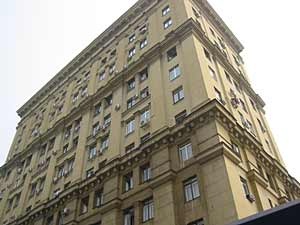
Rosatom’s English website describes Atomenergoprom as a “nuclear power holding company established in 2007 to consolidate over 80 [of] Rosatom’s civilian facilities operating in all segments of the nuclear fuel cycle.” The slightly expanded Russian version adds that Atomenergoprom’s goals are large-scale development of nuclear energy in Russia and promotion of Russian nuclear technologies on the international markets.
Fitch’s negative forecast for Atomenergoprom is perhaps the only example to date of the impact that the downgrade of the country’s credit rating and that of its leading strategic companies has had on the nuclear energy industry. While all other energy sectors are struggling under the heavy toll levied by Western sanctions and the deepening economic crisis, Rosatom’s companies seem to be doing fine. And that means that the global market for nuclear competitors remains so far a more or less level playing field.
Still, this year will be especially critical for Rosatom as the last year of large-scale government financing of new reactors. In accordance with the state program “Development of the Nuclear Power Generation Complex” (in Russian), adopted in June 2014 (see subprogram “Expanding Power Generating Capacities of Nuclear Power Plants,” due to expire in 2020), beginning in 2016 the corporation’s expenses are to be cut more than twofold: from 88 billion roubles (about $1.7 billion) earmarked for 2015 to just over 38 billion roubles (and to a little under 37 billion roubles in the following years). The financing plan was put together before the crisis, so Russia’s economic difficulties may yet play their role and cause further funding cutbacks for Rosatom.
Let’s assess the positions of the nuclear industry’s major players and see what’s in store for the nuclear technologies market. Should we be expecting a spectacular rise in nuclear energy development – which, experts in the industry insist, will be upon us any minute, because the world has supposedly already forgotten Fukushima?
No one’s forgetting
Four years have passed since the catastrophe at the Japanese nuclear power plant (NPP) Fukushima Daiichi. Despite big business doing its lobbying best to put pressure on the Japanese government, Japan has still not taken its 50 reactors back online. The reason for that is that the Japanese public is actively protesting against a re-launch. As a compromise, the government plans now to decommission for good 11 reactors, including six that are already shut down at the destroyed Fukushima Daiichi plant. And hinging now on whether the Japanese nuclear industry succeeds in having the remaining 39 units re-launched are both the development path that the energy sector in this country may take in the future and, to an extent, the fate of nuclear construction projects in other countries.
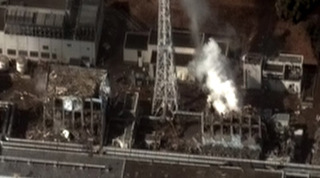
About a dozen world governments are currently watching the global nuclear market as they remain on the fence with regard to nuclear energy’s future. This uncertainty, furthermore, persists against a background of the falling prices of oil, gas, and coal, and, in addition, problems that are mounting for the world’s major nuclear companies.
After the Japanese nuclear accident, second in its staggering scope only to the 1986 disaster at Chernobyl, a number of European countries declared their decision to abandon nuclear power and announced phase-out plans. The undisputed leader here is Germany, which not only shut down nine reactors and made the commitment to gradually shut down the remaining eight approximately by 2022, but also managed to compensate for the outgoing capacity with renewable sources. Furthermore, the nuclear phase-out is proceeding without a rise in greenhouse gas emissions: Quite the contrary, Germany pledged even tighter emissions reduction targets. The country’s newly assumed commitment to a nuclear-free future both pulled the rug out from under the national nuclear industry and had its significant effect felt internationally. The largest German energy companies – such as Siemens, RWE, and E.On – chose not to invest in nuclear projects any longer. In other countries, government-level decisions opposing further development of nuclear energy were also taken by Belgium, Switzerland, and Italy.
Still, a number of European nations dared not change the course. Hardly anyone expected such a drastic turn from France, where 58 reactors are in operation and, according to the World Nuclear Association’s information, just over 73% electricity was produced by nuclear power plants in 2013. France’s company was joined by Finland, as well as Hungary and a few other countries of the former Communist Bloc, which have already received – or expect to receive – substantial financial support from Russia. In a situation where European private investors all show uniform skepticism toward nuclear energy, the only source of funding that remains is the state budget. In this case, Russia’s.
If France is the formal leader in nuclear energy in the European Union, Russia here is something of a grey eminence. The European company Areva expectedly controls the European market. But Rosatom, which is actively working in the French giant’s shadows, today has as strong a grip on the strings to the future of nuclear energy as the formal leader. Aside from striving to keep the market for the nuclear corporation itself, the Russian government also desperately needs allies in the European Union that would help hold off new sanctions against Russia’s embattled economy. For that, if need be, more and more credits may be issued that Russia’s former Communist satellites would unlikely be able to get anywhere else. But let’s get back to the situation with the EU’s formal leader.
Areva: Losses on all fronts
The project considered to be the flagship for the French nuclear industry in Europe is the nuclear power plant Hinkley Point C in Great Britain, estimated at €24 billion. The project envisions building two reactors of the EPR – for “European Pressurized Reactor” – design in Somerset, in England’s southwest. No new reactor construction was previously undertaken in Great Britain for a period of many years, and, on account of nuclear energy’s less than perfect reputation from the economic point of view, such a large-scale endeavor in a country with a market economy seemed quite unlikely.
Yet, the project received both the British government’s approval and state guarantees on a fixed purchase price for the power the future plant will be generating. A favorable determination on the project was eventually also handed down by the European Commission, which had been looking into the legality of the state guarantees provided to Hinkley Point C. What the grievances against the project boil down to is that purchase of power from Hinkley Point C at a guaranteed price – one that is substantially higher than today’s energy prices – has too close a semblance to state subsidies, and the latter is prohibited in the EU. This was the reason why far from all the European ministers voted in favor of the project, and litigation is still expected on the matter: Austria, which has voiced its disagreement with the European Commission’s decision, intends to challenge it in court.
Despite the guaranteed increased purchase price for Hinkley Point C’s power, however, investors are not in a hurry to jump on board with a project where Areva will not just build the reactors but is also to bring in funding in the amount of 10% of the project’s total cost. The problem is that last fall, the company admitted it was having serious economic difficulties, which may cause it to fail to deliver on the financial commitments in the Hinkley Point C project.
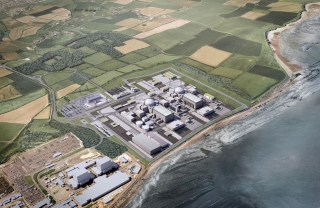
Areva’s economic troubles have to do with another project the company is pursuing: the highly problematic reactor construction at a new site in Olkiluoto, Finland. The financial losses Areva sustained from the project in 2014 came to almost €5 billion. Meanwhile, the total cost of the project has more than doubled (growing approximately to €8 billion) since it was started, and the launch has been pushed back by almost 10 years from the initially scheduled date of 2009. Areva has announced a crisis recovery plan estimated at €1 billion until 2017 is in the works. Most likely, these measures will include over 1,000 layoffs and sale of some of the company’s assets. The national energy company EDF is also expected to help with investments into Areva’s reactor-building business. Just as it happens in such cases in Russia, the holes in Areva’s pockets will be patched with state budget funds – proof once again that unless it can help itself to some taxpayer money, nuclear energy is unfit to survive in a free market economy.
As for the Hinkley Point construction, companies from Kuwait, Qatar, Saudi Arabia, and the future plant’s home country, Great Britain, have been named as potential investors, but none of them opted to join the project. Another potential investor is the China National Nuclear Corporation (CNNC). However, China’s state funding could only come into the project on the condition that the corporation would be given the right to own a new NPP at the Bradwell site in Essex, in England’s southeast. As Nick Butler, a former special adviser to Great Britain’s ex-Prime Minister Gordon Brown, wrote in his article on the website of the Financial Times, a problem could arise here in that this would necessitate also granting the Chinese corporation access to the national grid, which has exceptional strategic significance.
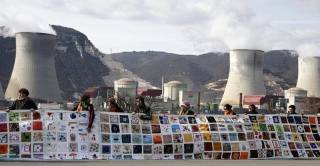
Both the EPR in Finland’s Olkiluoto and an analogous domestic project in France are lagging far behind schedule and have run substantially over budget. The government of India is slowly progressing with an EPR project in Jaitapur, on which a preliminary agreement has already been reached with Areva. Only time will tell whether the French giant’s attempts to promote the EPR technology will be successful in Saudi Arabia and other Arab countries, but it seems unlikely that Areva’s potential customers will feel inspired by the saga with the dramatic cost overruns in the company’s project in Finland.
Looking further into the future, the French will have to brace themselves for even harder times to come. In the 2020s, France is expected to start decommissioning those of its reactors that will have reached the end of their engineered service life. The decommissioning program is already estimated at €300 billion, and no one can guarantee that while in the process these costs will not rise further.
Rosatom: not much to brag about, either
In Arab countries and in Asia, in South Africa, and even inside the European Union borders, the French nuclear industry regularly bumps into competition: Russia’s state corporation Rosatom. The Russian company is selling the VVER-1200, a reactor type similar to – though less powerful than – the EPR. The official price cited for a VVER-1200 is around €5 billion. But independent observers, in the case of Rosatom’s new project in Finland, Hanhikivi NPP, estimate expenses per one reactor at over €7 billion. This is close to the current cost of the troubled EPR project in the same country.
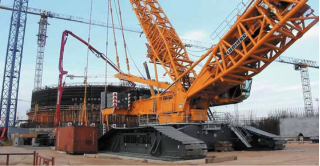
Up until this year Rosatom enjoyed practically unlimited financial backing from the Russian national budget, which made it the most likely among global nuclear builders to receive orders for new NPPs in developing countries. Indeed, no other reactor exporter in the world could afford to finance almost fully the cost of a new nuclear power plant in another country at the expense of taxpayers back at home. In the recent years credit agreements were inked by Russia with Hungary (Paks NPP) and Belarus (Ostrovets NPP), and in Finland, Rosatom bought a stake in Fennovoima, the Finnish company that owns the Hanhikivi project. Construction at that site is yet to begin.
And if in Finland things are so far progressing more or less smoothly, in Hungary, Rosatom faced some rough going. Earlier, Moscow and Budapest agreed on a €10 billion loan Russia would provide Hungary out of the Russian state budget – this amount covers some 80% of the deal – to build two new reactors at Paks NPP, where four Soviet-built units with reactors of the older type, VVER-440, are in operation. But the European Commission essentially blocked the project because the exclusive fuel supply rights were granted in this contract to Rosatom. In accordance with the fuel supplier diversification policy adopted in the European Union, European authorities’ demand is that other market players be admitted to participate in a fuel supply tender. Strictly speaking, this was a deadlock. VVER-1200s are yet to be completed and start operation anywhere in the world, and the technology for manufacturing fuel assemblies for these reactors belongs solely to Rosatom. Consequently, Rosatom would either have to abandon the project – or share its exclusive technology rights with someone else and, possibly, lose the fuel market for its own reactors. For their part, European leaders are trying to prevent a situation where the European Union might find itself increasingly dependent on Russian fuel supplies. This stance is to a certain degree dictated not just by the current political tensions but simply the laws that are in effect in Europe.
One possible compromise out of this dead end has already been proposed: According to recent updates on the Paks NPP situation, Hungary and Russia will move ahead with the project, with Rosatom remaining the exclusive fuel supplier for the station’s two new reactors for a period of 10 years. After that, other suppliers will be able to offer their fuel services for Paks NPP. Earlier, though, the European Union’s antitrust authorities were examining the entire deal for compliance with the existing laws because no open tender for the new NPP project had been held in Hungary prior to concluding the deal with Rosatom. Whether this issue has been resolved is not entirely clear.
This Hungarian respite notwithstanding, one will see Rosatom’s attempts to bring its reactor technology to European Union countries have so far ended in failure – despite all the resources the corporation invests in the effort. As a result, only the old Soviet-built units still remain in operation in Europe, and there are no new ones. The latest foray into Europe, when Rosatom proposed a new project in Bulgaria, ended in 2011 in a total fiasco: Following a change of political power in Bulgaria, the new government hired independent experts to evaluate the project’s costs, and the experts’ verdict was that the new NPP would prove substantially more expensive than was thought when the contract had been signed. The deal fell through.
Beyond the EU borders
The confrontation between Russia and Ukraine that started last year has made it essentially impossible for Rosatom to complete the construction of Units 3 and 4 of Khmelnitsky NPP in Western Ukraine. Still, at the end of last year, the Russian corporation claimed it had a sheaf of orders to the tune of over $100 billion – 27 new reactor orders, predominantly, in developing countries. At the end of 2013, $74 billion’s worth of new orders was cited.
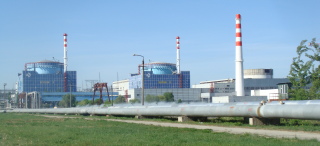
These figures should be taken with a grain of salt. In most cases, what is meant is not specific contracts, but rather agreements of a general nature. Effectively, these are obligations that are yet to be committed to paper. For instance, one such agreement on a strategic partnership in the development of nuclear energy was signed last fall with South Africa – something that Russian media presented as an order for eight new reactors and a range of nuclear power infrastructure sites to a total amount of approximately $40 billion.
But when details of the deal – which the government of South Africa kept secret – eventually found their way to the public, a scandal broke out: The document stipulates no liability on the part of Russian suppliers in case of a nuclear accident, provides for tax exemptions, and includes a restriction that forbids South Africa’s cooperation with any other countries without Russia’s permission. The country’s government so far insists it has not yet chosen the future contractor and claims agreements have been signed with France, South Korea, China, and other countries besides Russia. Last February, meanwhile, reports surfaced in the media that the implementation of the South African nuclear program was being postponed by several years due to political opposition.
If any new construction is happening at all in Rosatom’s projects, it’s only the new plants in China and Belarus (not long ago, it was also India, with Kudankulam-2, which was recently reported by the Russian media as completed). Back home, Rosatom promised to launch three new reactors in 2014, but only one started operation, at Rostov NPP in Southern European Russia. All new Rosatom construction sites where any work is being done are plagued by lengthy delays that translate into substantial cost rises. In Belarus, official statements made recently said the new NPP in Ostrovets would be completed at a later date than was scheduled initially.
One other important aspect is that Rosatom’s resources – including the corporation’s production capacities – are limited. It is very doubtful that Rosatom is capable of building dozens of new reactors across the world, as its claimed order book would suggest, within the next decade. Even in Russia, actual reactor construction rates are perpetually behind those stated in project schedules. Additionally, in the next several years, Rosatom is going to face the same problem that awaits France: decommissioning old reactors. Undoubtedly, Rosatom will try to cover these costs out of Russia’s budget. It’s difficult to predict whether by this time Russia will manage to overcome the consequences of the deep economic crisis it’s been suffocating under and whether we will have money enough for this extremely costly work. What is clear is that the money loaned for new reactor construction abroad will not have made it back in time. As a rule, maturity terms on these credits are decades into the future. One of the realistic scenarios, therefore, will have to be yet another round of license extensions for the old Russian reactors. Many of these are already operated beyond their engineered life spans, and further renewing their operating licenses can have a catastrophic impact on safety.
The deep economic crisis in Russia – this today is the most powerful factor bearing on the situation. Cutbacks are surely ahead for almost all, if not all, state companies. Being good at lobbying is a forte of Rosatom’s, but still its lobbying power is not that outstanding in Russia. Media reports in the beginning of 2015 said the Russian government intends to approve a loan for Rosatom for the project in Finland: The funding, equivalent to €2.4 billion, but no more than RUR 150 billion, is supposed to be earmarked this year and over the next two years from the Russian National Wealth Fund (with the upper limit set at 10% of the fund, whose purpose, according to the Ministry of Finance, is to complement and support Russia’s pension system). This is money that Rosatom requested as long as two years ago. But should state funding for “conquering” new nations and continents prove tight – which is more than likely – loans will have to be sought from banks.

With Russian state banks, prospects are equally dim, and that means one should expect to see a rise in Rosatom’s activity in Europe – especially so because so far Western sanctions have not included the nuclear corporation. But the recent story with Rosatom’s attempts to secure funding in Europe for the project of Baltic NPP is a vivid illustration of how challenging a task this will be. Despite five years’ worth of relentless efforts, Rosatom’s hope to attract investors to the project in the Russian enclave of Kaliningrad Region – from where 100% of future energy was planned to be exported to Europe – failed spectacularly.
Distress or demise?
Rosatom’s circumstances are unenviable. Last year, generous promises were given by the corporation to build dozens of new reactors in many different countries. India, China, Iran, Algeria, Jordan, Saudi Arabia – these are just some of the purported customers on the list. In 2015, Rosatom was planning to sign contracts in South Africa and, possibly, in Kazakhstan. A new addition is Egypt, though there is little clarity as to what documents exactly were signed there and whether they imply any specific commitments. It remains just as unclear how Rosatom is going to fulfil its promises if an order for a new reactor is actually made.
One of the options is to drag out all the necessary procedures as long as possible in the hope that oil prices will recover and the Russian economy will, by extension, follow suit. This is more or less apparently the tactic being employed with the agreement signed with Vietnam. According to the Vietnamese government, construction schedule there has already been pushed back to 2020.
We will certainly hear time and again arguments made in public forums that if the Russian government reduces funding for Rosatom, the corporation will lose its market share. But it could just as well happen that the vacuum left with Rosatom’s exit will never be filled: Areva is not the only major competitor to be having problems with financing new projects.
One possible contender for Rosatom’s or Areva’s market share could be the U.S.-based Westinghouse, a company controlled by Japan’s Toshiba. Westinghouse is currently promoting the AP-1000, the supposedly “safest reactor in the world.” But no independent economic assessment of this project exists, and after Fukushima, given the intense opposition in Japan to restarting the Japanese nuclear power plants, any country opting to partner up with the Japanese company is inviting a hit to its public image and, furthermore, a world of financial trouble on itself. An independent confirmation that the price of Westinghouse’s reactor is lower than those of its competitors is unavailable for now. Thus, the economic risks that all major nuclear builders are facing today are more or less similar.
There is also the possibility that Westinghouse’s new reactor design may have certain deficiencies. At any rate, the U.S. press has quoted statements by independent experts with regard to flaws in the design of the reactor’s containment. One AP-1000 was scheduled for launch in China last year, but the project is experiencing delays. This same factor – defects in the new reactor design – was one of the reasons for the soaring costs in the EPR construction in Finland, where the national oversight authority raised certain issues regarding the French reactor. Rosatom’s project in Finland may possibly find itself under the same tight scrutiny, since the Russian VVER-1200 is also a new design yet to be tested in operation anywhere. In any case, all three companies are failing to stick to the promised launch schedules for new reactors.
In the context of the ongoing fight for a piece of the nuclear pie, one assertion that is heard quite frequently of late is that Asian companies are ready to take on the Russian and Western competition. China is perhaps doing better as far as funding possibilities are concerned, but its nuclear sector is light on experience. It remains to be seen whether China’s own nuclear projects are up to par with the modern safety standards. A similar situation can be observed with projects out of South Korea.
Will any of the world’s nuclear heavyweights gain an undisputed lead at any time in the near future? At present, all the major nuclear players are evidently struggling with a host of problems that are affecting their ability to deliver according to project completion schedules. In other words, nuclear power development is slowing down, expenses are going up, and an even more drastic rise in costs can be expected in the foreseeable future.
Neither the budgets, nor construction deadlines for new nuclear power plants are being met, and the reputation of the nuclear power industry still remains far from trustworthy. Essentially, what we are observing today is a direct demonstration that nuclear business does not – and cannot – offer any guarantees. And the consequences of this state of affairs may prove devastating both for those who take the risk of becoming its customers and the global nuclear industry itself.
Vladimir Slivyak is co-chairman of the Russian ecological group Ecodefense. This article was originally published in Russian in the latest issue of Environment & Rights, a quarterly published by the St. Petersburg Environmental Rights Center Bellona. This translation has been updated by the author to include latest developments.

Our op-ed originally appeared in The Moscow Times. For more than three decades, Russia has been burdened with the remains of the Soviet ...

The United Nation’s COP30 global climate negotiations in Belém, Brazil ended this weekend with a watered-down resolution that failed to halt deforest...

For more than a week now — beginning September 23 — the Zaporizhzhia Nuclear Power Plant (ZNPP) has remained disconnected from Ukraine’s national pow...

Bellona has taken part in preparing the The World Nuclear Industry Status Report 2025 and will participate in the report’s global launch in Rome on September 22nd.